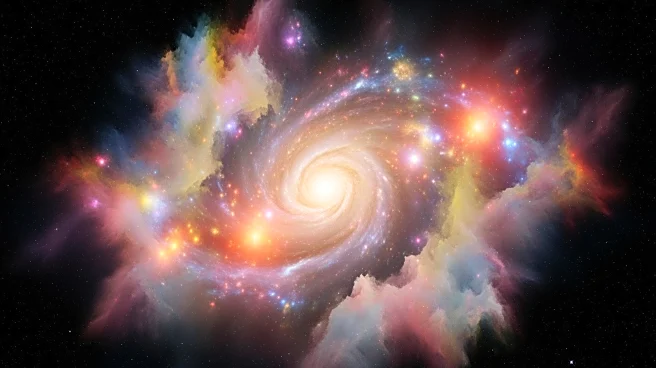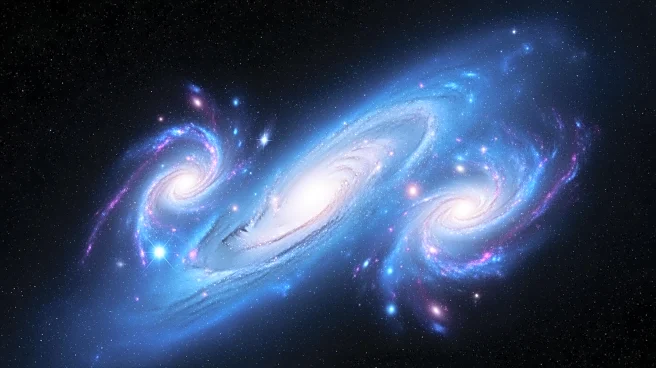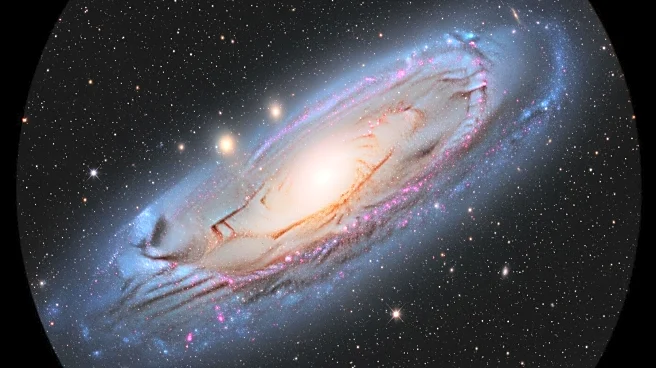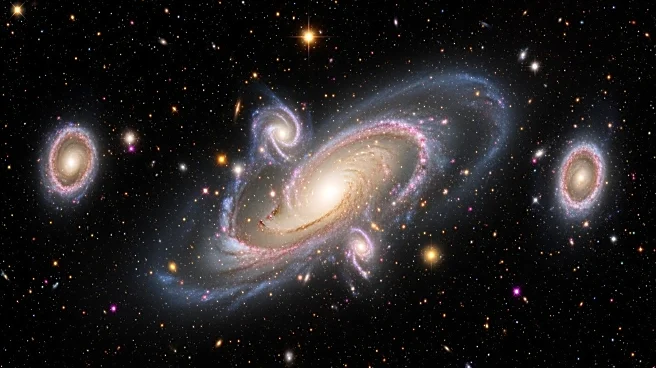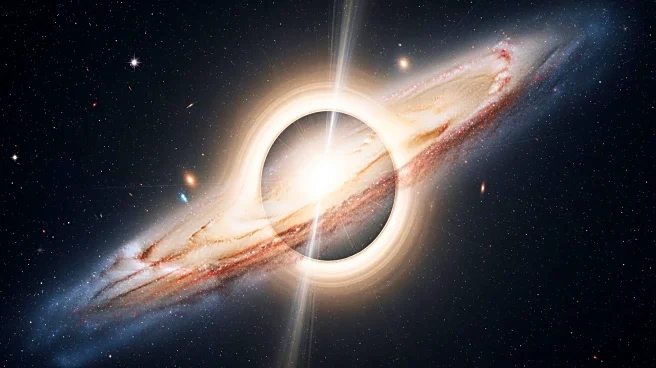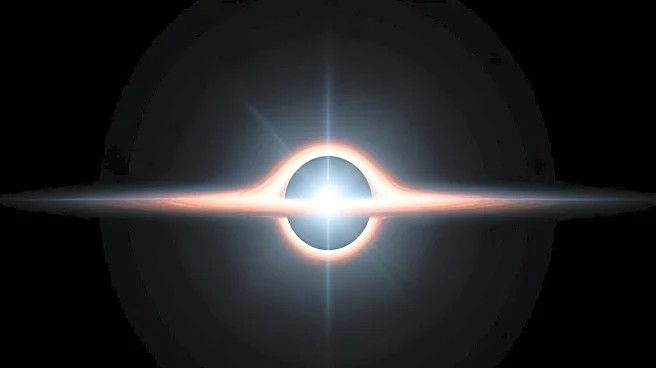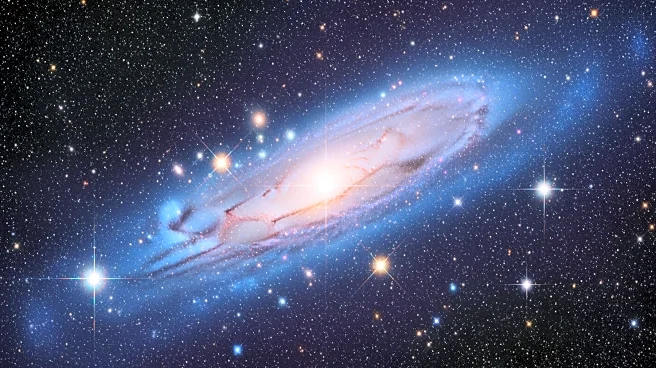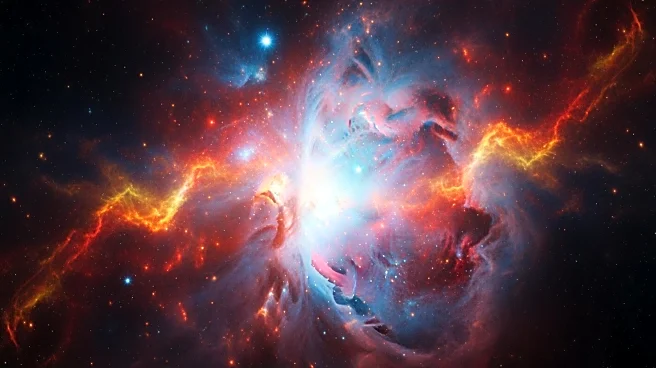What's Happening?
A new study using the James Webb Space Telescope has found that early star-forming galaxies were far more turbulent than their modern counterparts. Researchers examined 213 galaxies from a period 800 million
to 1.5 billion years after the Big Bang, discovering that these galaxies had messy, puffed-up disks. The study suggests that higher star formation rates correlate with increased turbulence, challenging previous assumptions about the orderly formation of galactic disks. This research provides new insights into the early stages of galaxy evolution.
Why It's Important?
Understanding the formation and evolution of galaxies is crucial for comprehending the universe's history and structure. This study challenges existing models of galaxy formation by highlighting the chaotic nature of early galaxies. By examining the conditions that led to the formation of modern disk galaxies, scientists can refine their models and gain a deeper understanding of the processes that shaped the universe. This research also provides a missing link between the earliest galaxies and the more stable structures observed today.
What's Next?
Future research will focus on combining observations from the James Webb Space Telescope with data from other instruments like the Atacama Large Millimeter/Submillimeter Array. This will help scientists study the assembly of the first galaxies and understand the transition from chaotic systems to stable disks. Continued exploration of early galaxies will provide valuable insights into the processes that drive galaxy formation and evolution.
